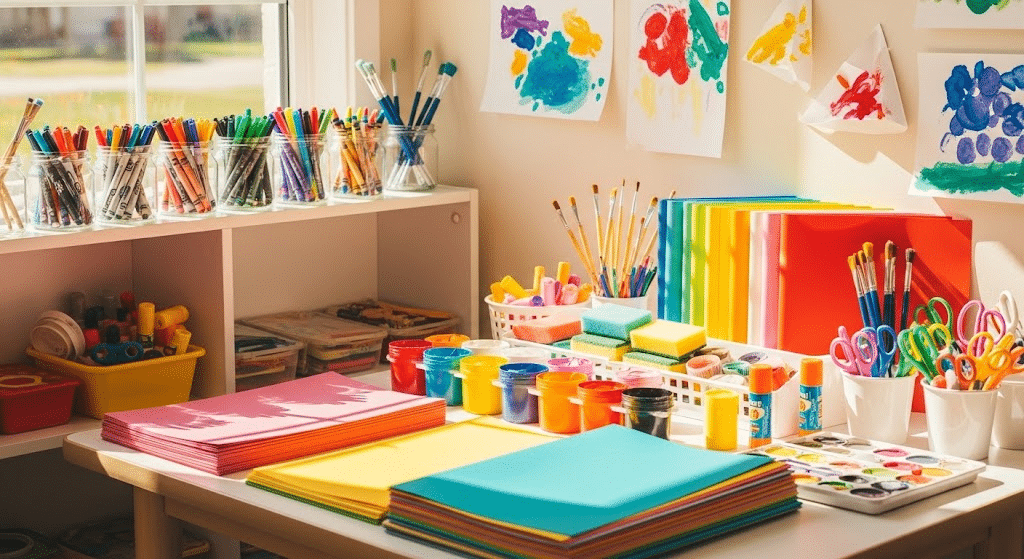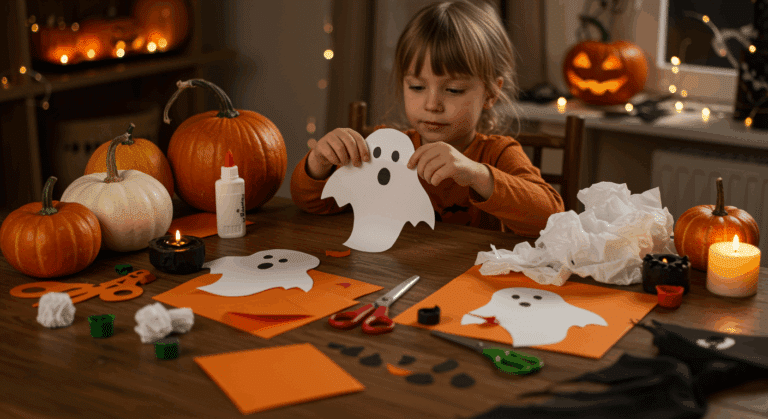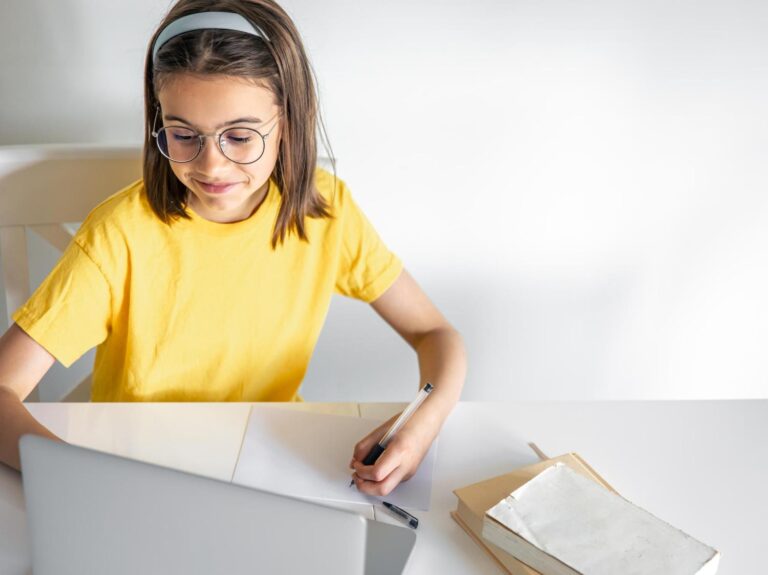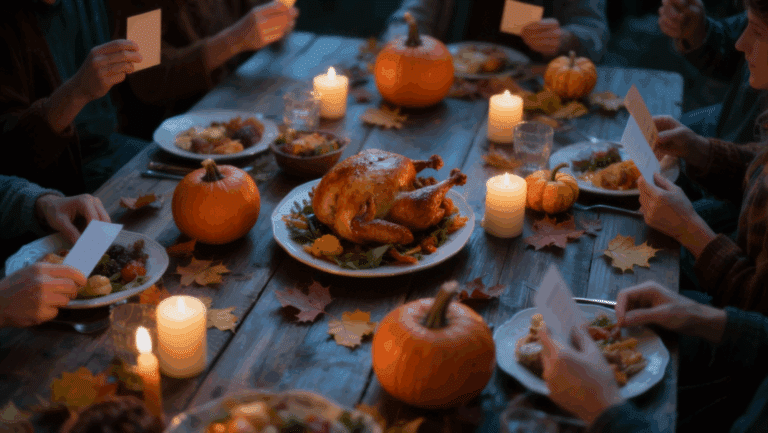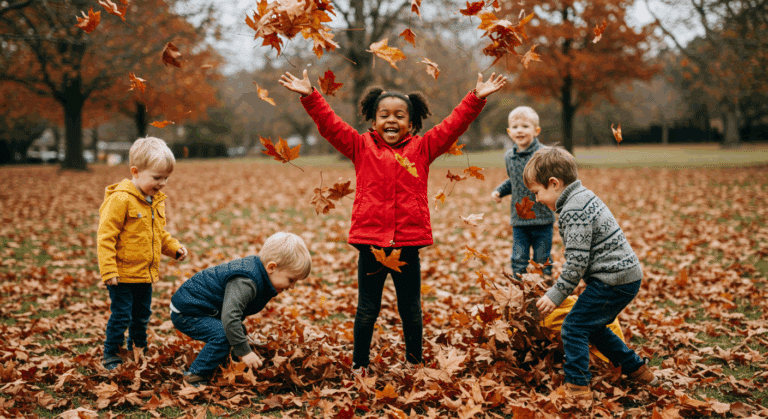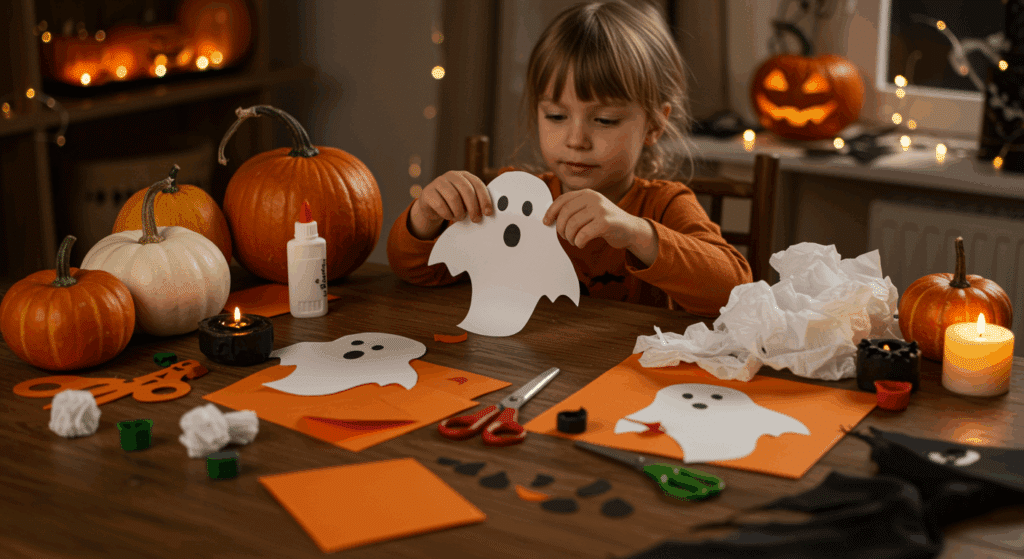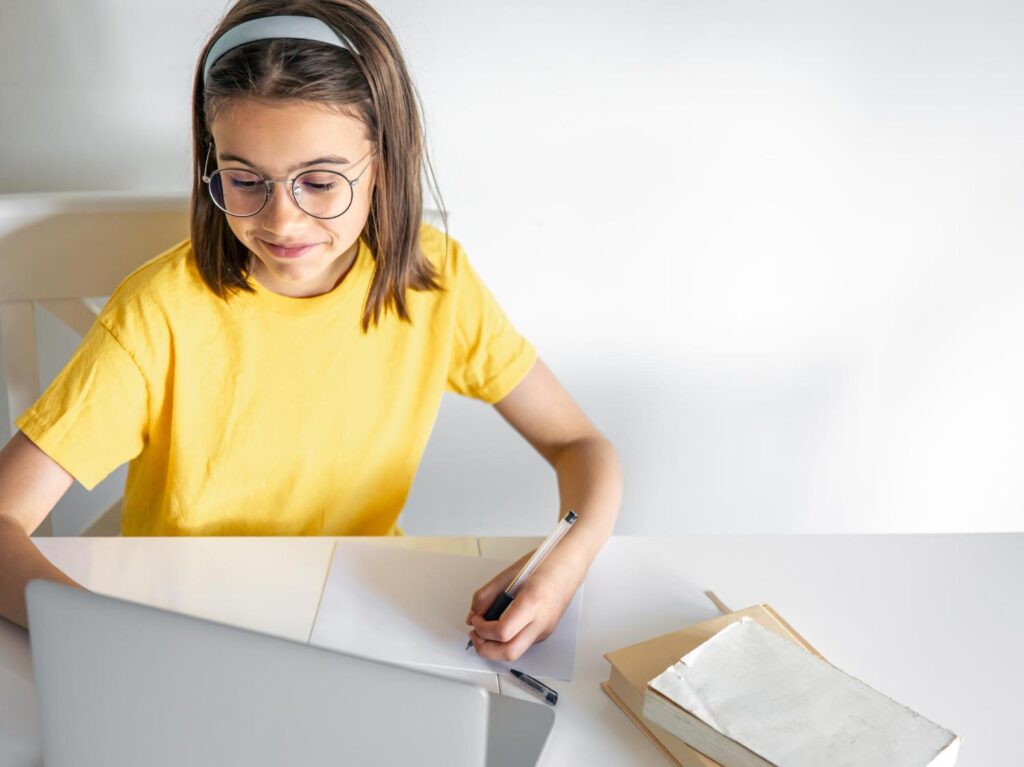Every parent knows that moment. Their three-year-old grabs a crayon and starts creating masterpieces on the kitchen wall. This natural urge to create shows something important.
Young children need outlets for their creativity to grow and develop properly.
This blog offers simple, fun art activities for preschoolers that work perfectly for preschoolers. These projects help children build fine motor skills. They also boost confidence and self-expression.
Let’s start building that creative foundation today.
Why Art Matters for Preschool Development
Art activities do more than keep little hands busy. They build essential skills that help children grow in multiple ways. Research shows that creative activities support brain development during these critical early years.
- Boosts Fine Motor Skills: Gripping crayons, cutting with scissors, molding clay, and threading beads all strengthen hand muscles and improve hand-eye coordination for future writing.
- Supports Emotional Expression: Art lets children express big feelings through colors and materials, helping them understand and manage emotions.
- Builds Communication and Flexible Thinking: Making art encourages decision-making, problem-solving, and describing creations, which expands vocabulary and cognitive flexibility.
- Encourages Social Skills: Group art projects teach sharing, turn-taking, listening, and cooperation with others, skills that last a lifetime.
List of Art Activities For Preschoolers
Art activities for preschoolers are a wonderful way for preschoolers to express themselves, learn about new materials, and develop important skills like creativity, fine motor control, and color recognition.
Process Art Activities
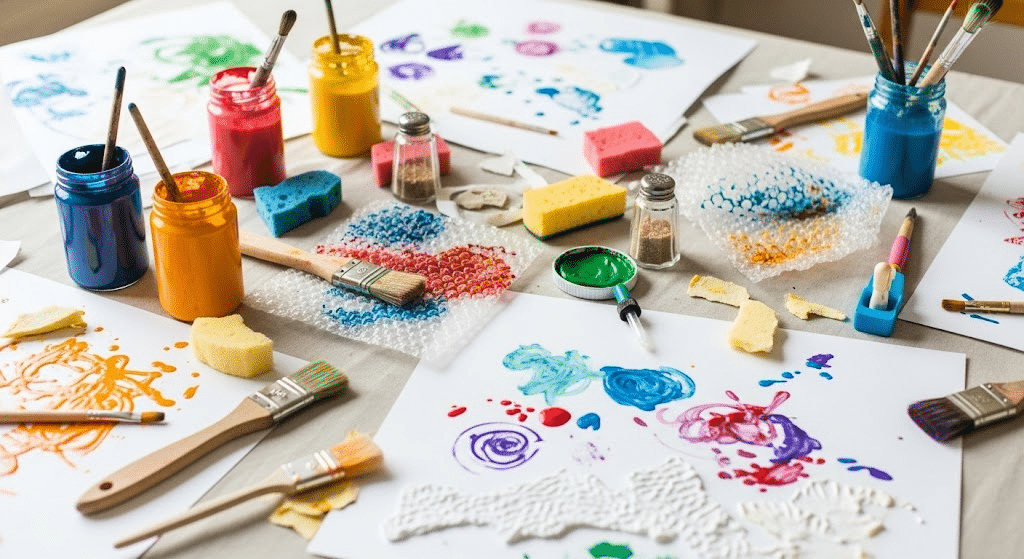
Here, children can use materials freely, focusing on the creative path rather than the finished product.
These open-ended projects spark imagination, experimentation, and sensory finding using everyday art supplies.
1. Color Mixing with Vinegar & Baking Soda
Color Mixing with Vinegar & Baking Soda is a fun science activity where kids mix food coloring into baking soda, then add vinegar to watch colorful fizzing reactions.
Educational Benefits:
- Encourages hands-on exploration of color mixing and chemical reactions.
- Using droppers helps develop fine motor skills.
- Teaches basic color theory in an engaging, sensory way.
2. Blow Painting
Blow Painting is an engaging art activity where children drop liquid paint on paper and use straws to blow and spread the colors, creating unique patterns.
Educational Benefits:
- Builds fine motor and oral motor skills through controlled blowing.
- Encourages creativity, color exploration, and imagination.
- Supports focus, breath control, and can have a calming effect.
3. Salt Painting
Salt Painting is a creative art activity where children sprinkle salt onto wet watercolor paint, watching as the salt absorbs the color and creates beautiful, textured patterns.
Educational Benefits:
- Demonstrates absorption as salt pulls pigment, forming unique starburst effects.
- Encourages sensory exploration and creativity through visual and tactile experiences.
- Results in sparkly, textured artwork that fascinates children of all ages
4. Bubble Wrap Printing
Bubble Wrap Printing is a tactile art activity where children paint bubble wrap and press paper on top to create textured, bumpy prints.
Educational Benefits:
- Teaches cause and effect as children see how different pressures and movements change the print.
- Develops fine motor skills and hand-eye coordination through painting and pressing actions
5. Baking Soda Painting
Baking Soda Painting is a sensory art activity where baking soda is mixed with paint to create thick, textured artwork that dries with raised surfaces.
Educational Benefits:
- The activity can be combined with vinegar for a fizzy, bubbling reaction, adding a science element.
- Supports creativity and fine motor skills as kids paint, mix colors, and experiment with texture.
6. Monochrome Color Collage Paintings
This activity involves using only one color family in various shades of light and dark to create harmonious artwork.
Educational Benefits:
- Helps children understand color relationships and value differences within a single hue.
- Promotes focus and creativity while making visually calming, cohesive art pieces.
- Encourages exploration of mood and expression through limited color choices.
7. Sticker Collage Art
Sticker Collage Art lets children place stickers on paper, paint over them, and peel them off for fun resist effects.
Educational Benefits:
- Builds fine motor skills through sticker placement and painting.
- Adds excitement and creativity with surprising, revealed patterns.
8. Tear Paper Collage
Tear Paper Collage is an art activity where children tear colored paper into pieces and glue them down, building finger strength without scissors.
Educational Benefits:
- Strengthens hand muscles and fine motor skills while encouraging creativity and self-expression.
- Introduces children to textures, shapes, and layering as they assemble unique, tactile artwork pieces.
9. Sponge Painting
Sponge Painting involves dipping sponges in paint and dabbing them on paper, using different textures to create varied effects.
Educational Benefits:
- Children develop fine motor skills and hand-eye coordination while exploring color mixing and texture.
- The activity teaches pressure control, encourages creativity, and provides a rich sensory experience.
10. Paper Towel Art
Paper Towel Art involves folding paper towels and dipping their corners into liquid watercolors, letting colors spread and blend beautifully.
Educational Benefits:
- Children observe capillary action as colors move through the paper, creating tie-dye effects.
- This activity is low-mess, visually captivating, and encourages curiosity about science and art.
11. Apple Stamping
Apple Stamping uses halved apples dipped in paint as stamps to make repeating patterns and explore shapes on paper.
Educational Benefits:
- Builds fine motor skills and hand coordination while teaching about natural shapes and textures.
- Connects art to nature and can spark conversations about healthy eating and plant life.
12. Outdoor Name Art
Outdoor Name Art involves using natural materials like sticks and leaves to spell out names on the ground.
Educational Benefits:
- Encourages letter recognition and early literacy skills in a fun, hands-on way.
- Connects children with nature while combining creative play and learning outdoors.
13. Paper Scrap Tree
Paper Scrap Tree has children tear brown paper for trunks and glue on colorful scraps as leaves, creating their own trees.
Educational Benefits:
- Builds fine motor skills through tearing and gluing while fostering creativity.
- Teaches about seasons and nature, increasing children’s awareness of the environment.
14. Rain Splatter Painting
Rain Splatter Painting involves placing paper with paint drops outside in light rain, letting natural water create unique splatter effects.
Educational Benefits:
- Children observe how weather interacts with art, sparking curiosity about nature.
- Each artwork is one-of-a-kind, combining creativity with an outdoor science experience.
15. Bubble Painting
Bubble Painting mixes paint with bubble solution, then children blow bubbles onto paper so they pop and leave colorful circles and patterns.
Educational Benefits:
- Builds breath control and introduces concepts like air pressure and color mixing.
- Creates unpredictable, cheerful art while encouraging sensory exploration and creativity.
Creative Craft Project Ideas that are Wow
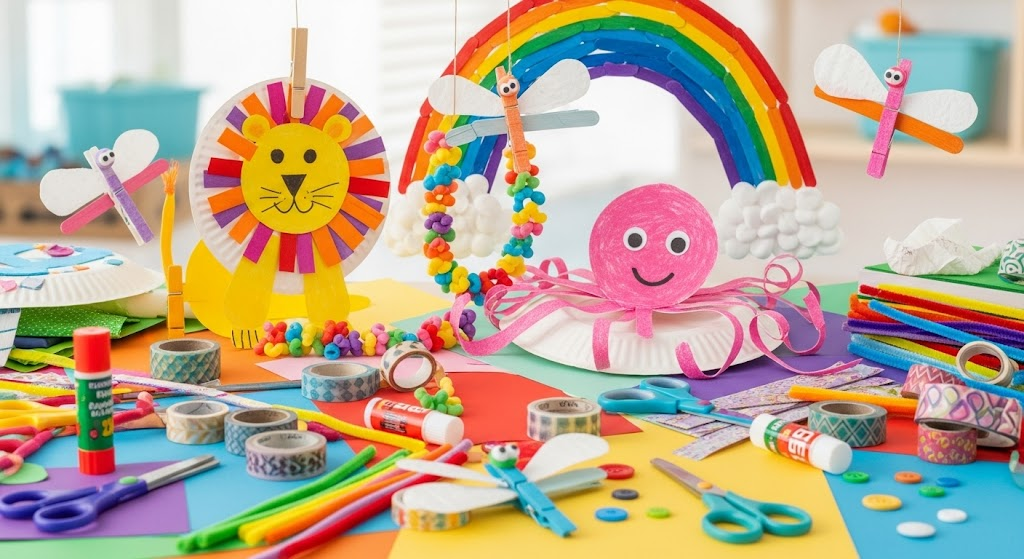
These projects invite children to create fun, hands-on artwork using everyday materials.
Children build fine motor skills, spark creativity, and encourage problem-solving as kids cut, glue, thread, and construct their own imaginative masterpieces.
16. Easy 3D Sculptures
Easy 3D Sculptures use materials like cardboard boxes, toilet paper tubes, and tape to build towers or animals.
Educational Benefits:
- Develops spatial reasoning and hand-eye coordination as children stack, balance, and connect pieces.
- Encourages creative problem-solving and imaginative construction through hands-on exploration.
17. Playdough & Poke-Ins
Playdough & Poke-Ins involve rolling playdough flat and pressing objects like buttons or coins into the surface to make textured patterns.
Educational Benefits:
- Builds hand strength and fine motor skills as children practice pressing and manipulating different objects.
- Encourages exploration of textures and shapes, sparking creativity and sensory development.
18. Modeling Clay Sculptures
Modeling Clay Sculptures let children squeeze, roll, and shape soft clay into animals or objects, encouraging open-ended creativity.
Educational Benefits:
- Strengthens finger muscles and fine motor skills through hands-on manipulation of clay.
- Promotes three-dimensional thinking and spatial awareness while allowing for imaginative, self-directed learning.
19. Macaroni Necklace
Macaroni Necklace involves threading large pasta shapes onto yarn or string to make colorful jewelry.
Educational Benefits:
- Strengthens fine motor skills and hand-eye coordination as children practice threading motions, which help prepare hands for writing tasks.
- Builds patience and concentration while allowing kids to create wearable, personalized art pieces they are proud to show off.
20. Paper Plate Lion
Paper Plate Lion is a craft where children cut paper plates for the lion’s face, add a mane from construction paper or other materials, and glue on facial features.
Educational Benefits:
- Builds fine motor skills through cutting, gluing, and assembling, while encouraging creativity and hand-eye coordination.
- Teaches about animal characteristics and can spark interest in science topics like animal habitats and behavior.
21. Popsicle Stick Rainbow
Popsicle Stick Rainbow is a colorful craft where children glue colored popsicle sticks in rainbow order on paper to make cheerful decorations.
Educational Benefits:
- Teaches color sequencing and reinforces color order while developing gluing and building skills.
- Creates bright, decorative art perfect for displaying in children’s rooms or classrooms.
22. Paper Plate Octopus
Paper Plate Octopus is a craft where children cut a paper plate into strips for tentacles and add a face on the top section, making a playful sea creature.
Educational Benefits:
- Encourages cutting curved lines and counting eight arms, blending math concepts with fine motor skill practice.
- Teaches about ocean animals while fostering creativity and hands-on learning.
23. DIY Stamps
DIY Stamps are made by gluing foam shapes to blocks or cutting sponges into shapes, then dipping them in paint and stamping on paper.
Educational Benefits:
- Builds hand control and fine motor skills through repeated stamping motions.
- Teaches pattern recognition and encourages creativity with custom designs.
24. Washi Tape Paper Plates
Washi Tape Paper Plates involve covering paper plates with colorful washi tape to create fun patterns and designs.
Educational Benefits:
- Enhances finger dexterity and fine motor skills through peeling and sticking.
- Encourages creativity while making decorative, reusable art pieces.
25. Clothespin Dragonflies
Clothespin Dragonflies are made by clipping wooden clothespins onto decorated coffee filters for wings and adding pipe cleaner antennae, letting children create their own flying insect crafts.
Educational Benefits:
- Strengthens hand muscles and fine motor skills through pinching, clipping, and assembling parts.
- Teaches about insects and encourages imaginative play with colorful, handmade creatures.
How to Organize a Creative Art Space for Preschoolers
Setting up the right space makes all the difference. A well-organized art area encourages children to create while keeping parents sane. The key is making supplies accessible without creating chaos.
Choose the Right Spot (and Make It Kid-Friendly)
- Good lighting: Natural light works best, but bright lamps help too
- Easy cleanup surfaces: Think washable tables or plastic tablecloths
- Child-height storage: Kids need to reach their own supplies
- Space to move: Room for little arms to spread out and work
Materials to Keep on Hand
| Material | Purpose |
|---|---|
| Washable paints (primary colors) | Introduce basic color mixing and creative expression without staining clothes |
| Chunky brushes | Easy for small hands to grip and control |
| Large paper sheets | Encourage big arm movements and reduce mess |
| Non-toxic glue sticks | Safe for independent use and ideal for collage activities |
| Safety scissors (rounded tips) | Help develop fine motor skills while keeping little fingers safe |
| Crayons and markers (bright colors) | Stimulate visual interest and promote early writing/drawing skills |
Storage and Rotation Systems That Work
Use clear plastic bins so children can see what’s inside. Label containers with both pictures and words. Rotate materials weekly to maintain interest. Keep frequently used items within easy reach. Store messy supplies like paint in secured containers to prevent accidents.
Displaying Kids’ Art to Build Confidence
Create a special wall space just for their artwork. Use colorful frames or clothespins on string for easy rotation. Take photos of larger projects before storing them. This shows children that their creative work has value and encourages continued artistic expression.
Conclusion
Art activities don’t need to be perfect or complex to make a difference. The goal isn’t creating future artists, it’s raising confident children who aren’t afraid to try new things.
Every scribble and paint splash builds important skills that help in school and life.
These simple projects prove that creativity doesn’t require expensive supplies or hours of preparation.
Start with just one activity this week. Set aside 15 minutes and let children lead the way. Watch as their confidence grows with every colorful creation they make.


